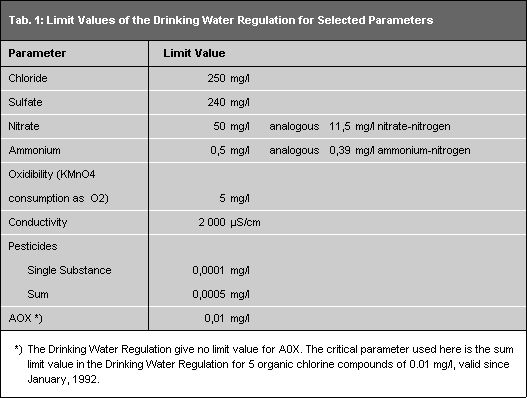Choice of Indicators
Standard parameters were chosen as indicators for the quality of near-surface groundwater: chlorides, sulfates, ammonium, nitrates, oxidibility, conductivity and levels of AOX and pesticides.
Ammonium and nitrate are considered parameters for pollution of near-surface groundwater by sewage water and feces. The oxidibility gives indications for organic pollution. Electrical conductivity, a sum parameter for dissolved substances in groundwater, is a parameter for contaminations of inorganic matter and a standard for general pollution of salts. The same is true for chlorides. ‘Chemically stable’, chlorides do not transform and can thus be followed over long distances. Groundwater deterioration from high sulfate impacts indicate debris underground or waste disposal sites with large amounts of building rubble. AOX stands for adsorbable halogenated hydrocarbons and serves as indicator for intensive industrial use. The presence of AOX is also characteristic for pollution from the storage of industrial waste (old contaminated sites).
Limits
The graphic depiction of results is oriented to legal limit values of the Drinking Water Regulations. It must be noted that limit values are valid in a strict sense only for drinking water (pure water). They are used here as critical parameter for groundwater because other criteria are lacking. Basically, a ground water quality without anthropogenic influences should be attained. Table 1 gives selected parameters and limit values set by drinking water regulations.

